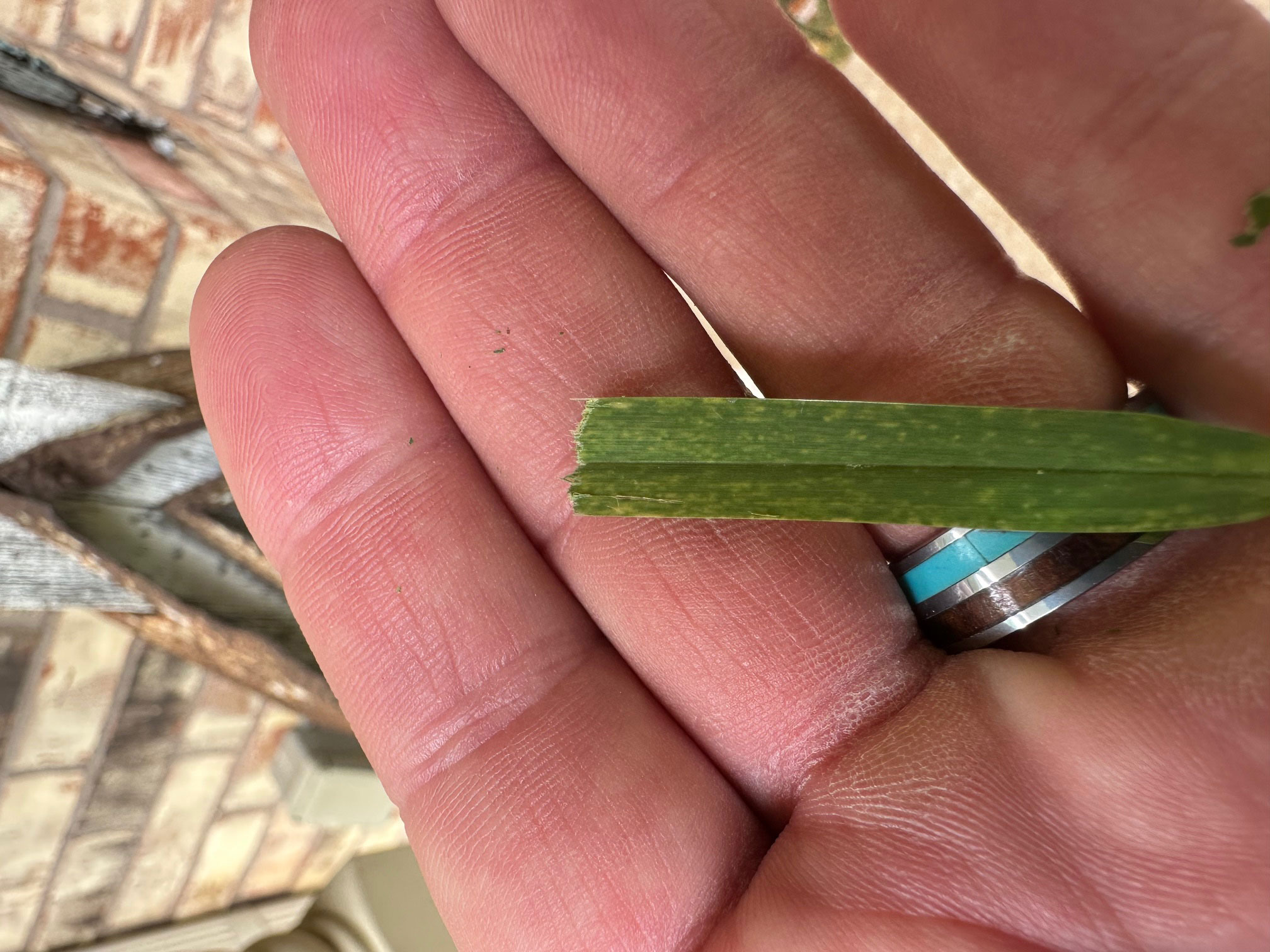St. Augustine Decline (SAD) is caused by a virus (specifically a closterovirus) that attacks the grass at the cellular level. It spreads through mowing equipment and other forms of contact and gradually weakens the plant’s ability to photosynthesize, leading to:
- Yellow mottled leaves
- Patchy, thinning turf
- Slower recovery from drought or foot traffic
- General decline even with “good” maintenance
🧬 How It Spreads
The St. Augustine Decline virus spreads primarily by:
- Lawn mowers and string trimmers that move from yard to yard
- Homeowners mowing different parts of the property with the same equipment
- Poor-quality sod harvested from infected farms
Once your St. Augustine lawn has the virus, there is no cure. Fungicides, fertilizers, and insecticides won’t make a difference.
🧪 How to Know If It’s SAD
We commonly confuse SAD with:
- Iron chlorosis (nutrient deficiency)
- Take-all root rot
- Gray Leaf Spot
- Drought or shade stress
But when we inspect it closely, SAD has a distinct “mottled” yellow pattern that affects older leaf blades first and worsens over time—especially in warm, wet months.
✅ What We Recommend
1. Test and confirm
We diagnose SAD visually and based on turf history. There’s no lab test most homeowners need—we know what to look for.
2. Switch to a resistant variety
In Burleson, Texas we recommend Raleigh St. Augustine because it:
- Has genetic resistance to SAD
- Is readily available from local sod farms
- Handles our winters better than other varieties
You don’t have to re-sod the whole yard at once—you can replace the worst areas and slowly phase out infected grass.
3. Avoid unnecessary fertilizers
Over-applying nitrogen won’t help and may accelerate decline. We’ll adjust your program based on lawn response and season.
📹 See It in Action
Watch my breakdown of St. Augustine Decline in this quick field video:
Final Thought
If your St. Augustine keeps going downhill no matter what you do, it may not be your fault—it might be St. Augustine Decline.
We’ll give you an honest assessment—no guesswork, no unnecessary treatments. If it’s SAD, we’ll help you make the right long-term decision for your Burleson, Texas lawn.
📞 Call 1-800-LAWNCARE or visit BurlesonLawnCare.com to schedule a diagnosis today.


